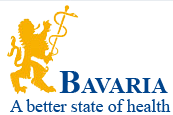GENETIC DIAGNOSTICS
To learn more about genetic / invasive diagnostics, click on one of the listed topics.
Genetic counselling
Genetic counselling and analyses
In human genetic counselling, we cooperate with several experts.
About 3-4% of all children are born with a genetic disease, deformity or disability. The standard example of genetic counselling is the case when persons within your family have a certain deformity or possibly a genetic disease or when you already have a child with a hereditary disease and want to know how high the risk is to have another child who is affected. Genetic counselling will inform you about the risk of falling ill with the disease, the course of the disease and diagnostic options. Genetic counselling will help you make your individual decision in a specific situation, also with regard to family planning. The consultation session usually takes between 30 minutes and one hour.
What are hereditary diseases?
There are over 7000 hereditary diseases known and approx. 1000 of them can be detected via genetic diagnosis. This number will be even higher in future.
The reason of a hereditary disorder lies in a modification of the genetic material (the DNA). Such modification may affect individual genes (gene mutations) or entire chromosomes (chromosomal disorders). A hereditary disease is likely if several members of one family in the same or different generations have fallen ill with the same disorder. Hereditary diseases can also occur for the first time due to a sudden modification of the genetic material (spontaneous mutation).
Genetic counselling is advisable in the following cases:
-
if the mother or the father is of a higher age
-
prior to invasive diagnostics (amniocentesis, chorionic villus sampling, foetal blood sampling)
-
following medication or exposure to radiation during pregnancy
-
in case of repeated miscarriages
-
in case of consanguineous marriages
-
in case of suspicious ultrasonic results
-
in case of suspicious screening test results (early screening, triple test)
-
in case of certain maternal diseases (e.g. epilepsy)
-
if a hereditary disease is suspected in a family member, in order to assess the risk of repetition
-
in case of general questions concerning prenatal diagnosis
-
if artificial insemination is planned
The costs of human genetic counselling are borne by the statutory and private health insurances. Members of the statutory health insurance need a referral from their doctor.
Counselling may also reveal that e.g. a blood test of your partner is necessary.
Non-invasive diagnostics
Nuchal scan
Nuchal translucency measurement is carried out by an ultrasonic scan of the fluid behind the neck of the foetus known as the nuchal fold. The scan is carried out between the 11th and 14th week of pregnancy. Foetuses with trisomy 21 (Down syndrome) tend to have a larger nuchal fold. A normal nuchal fold does, however, not prove that there is definitely no Down syndrome!
Measuring the nuchal translucency can detect whether or not your child is likely to suffer from a genetic disease such as trisomy 21 or trisomy 18. The scan can only estimate the risk for trisomy 21.
This measurement is combined with blood sampling (PAPP-A and ß-HCG). This increases accuracy up to 94%.
An accurate statement on trisomy 21 can only be given by e.g. chorionic villus sampling (CVS) or an examination of amniotic fluid (amniocentesis). This means that even after the nuchal scan it is not 100% clear whether or not your baby suffers from trisomy 21. However, this scan can help you to decide whether you want to have another diagnostic test later, e.g.an examination of the amniotic fluid.
After the 14th week of pregnancy, the lymphatic fluid is reduced in all babies. This examination will not carry any increased risk to you or your child.
Measuring alpha-1-fetoprotein (AFP) as a screening test for defects of the foetal central nervous system
A repeatedly increased AFP level may hint to a neural tube defect (split spine) of the foetus. The reasons for increased AFP levels not caused by neural tube defects are in about 30% of all cases due to misestimating the gestational age.
An AFP screening is performed between the 16th and the 21st week of pregnancy upon request of the expectant mother, if amniocentesis is not an option.
Neural tube defects, occurring in 1-2 newborns in 1,000 in Central Europe, are the most common defects of the CNS. AFP is produced by the foetal yolk sac and eventually by the foetal liver. From there it goes into the bloodstream, the liquor and the bile and is then released to the amniotic fluid via the foetus’ urine. AFP reaches the mother’s bloodstream by transamnial passage from the amniotic fluid.
In a normal pregnancy, AFP levels increase constantly between the 10th and the 32nd week of pregnancy and then decrease to the level of the 24th week by delivery. AFP decreases gradually in the amniotic fluid in the 16th to 22nd week.
While closed defects do not cause increased AFP levels, other severe foetal defects with large open, serous areas (e.g. omphalocele, congenital nephrosis, gastrointestinal atresia) also lead to higher AFP levels in the amniotic fluid and the serum.
Measuring maternal serum AFP between the 16th to 20th week of pregnancy is recommended as a screening test for open neural tube defects.
Triple test
The triple test is an examination of the expectant mother’s blood. It is performed in the 16th-17th week of pregnancy and measures the following three levels in the maternal serum.
The purpose of the triple test is to assess the risk and to provide support for decision-making if it is not sure whether an examination of the amniotic fluid (amniocentesis) shall be performed. When the exact gestational age is known, the test results will reveal whether there is a higher risk that the unborn child suffers from the Down syndrome (trisomy 21, “mongolism”) or a spina bifidaa (“split spine”).
Chorionic villus sampling
Chorionic villus sampling
Chorionic villus sampling (CVS) is the earliest possible examination in invasive diagnostics. As the nuchal fold scan, it is usually performed between the 11th and 14th week of pregnancy. For example amniocentesis is usually not yet possible at such an early stage. This is the reason why CVS is recommended when an early or fast diagnosis is required, e.g. in the following cases:
-
in case of abnormal ultrasound scan results in the first trimester of pregnancy
-
if diseases which can be detected with invasive diagnostics are known in the family history
-
if the mother wishes to have a diagnosis as early as possible, e.g. in case of advanced maternal age
-
if early screening indicates an increased risk
The foetal cells obtained from the placenta will be cultivated in a culture. Since the chorionic villi contain a large amount of cells in the cell division stage (only in this phase, chromosomes can be seen under a light microscope), a sample of the tissue is cultivated for about 24 hours and then processed for microscopic examination.
This ensures that chromosomes can be examined immediately and first results are available within 1-2 days (short-term results). In most cases such findings are already diagnostically conclusive. However, fine structural anomalies or the so-called mosaicism (the simultaneous presence of healthy and sick cells in one organism) cannot be recognised or excluded with certainty.
Long-term cultivation which is available after about one week will then reveal results with the highest possible informative value.
Since in chorionic villus sampling no amniotic fluid can be extracted for measuring the alpha-1-fetoprotein (AFP)in order to detect any open neural tube defects in the vertebrae or the skull, an AFP screening should be performed from the mother’s blood in the 16th – 18th week of pregnancy and/or an ultrasound scan should be made in the 20th -22nd week in order to exclude such defects as far as possible.
CVS procedure
You will first have an extensive talk with your doctor, who will inform you about the performance, significance, limitations and risks of the intended examination.
After an extensive ultrasound scan of the unborn child, the position of the placenta and the form of the uterus are assessed. Then the doctor determines the best puncture site which will usually be within the area displayed on the picture below.

Then, after thorough disinfection of the abdominal wall twice and under continuous ultrasound guidance, a very thin needle will be inserted through your abdominal wall and into the placenta and the chorionic villi will be extracted into a syringe with a culture medium. The sample is then immediately checked to confirm that a sufficient amount has been extracted.
The puncture itself usually takes only about 20 seconds. The pain caused by the procedure (usually just a discomforting pinching in the abdominal area which women often compare to menstrual pain) is very little so that local anaesthesia is not necessary.
Behaviour after the puncture
After the puncture you should rest and lie down at home for the rest of the day; and for the following three days you should also stay at home and take it easy.
Amniocentesis
Examination of amniotic fluid (amniocentesis)
Hardly any other examination in the field of prenatal screening has been distorted as much by exaggerations, half-truths and self-proclaimed experts as the examination of amniotic fluid (amniocentesis). On the internet, you can often find complication rates of 2% to 4%. Many expectant parents believe that one of the greatest risks of amniocentesis is the risk of injury to the foetus with the needle. However, objective and sound information on amniocentesis can answer many questions and also dispel the expectant parents’ fears.
Of course, no presentation on the internet whatsoever can ever replace a personal consultation, e.g. consultation within human genetic counselling.
Amniocentesis is usually performed between the 14th and the 19th week of pregnancy in order to detect chromosomal abnormalities. Foetal cells in the amniotic fluid are withdrawn and cultivated in a culture. After approx. 8 – 12 days, the chromosome set of the unborn child can usually be determined.
The chromosomal analysis is aimed at detecting chromosomal defects in terms of the number of chromosomes (the best-known defect is the Down syndrome = trisomy 21, previously known as mongolism) and structural chromosomal alterations visible under a light microscope. However, finer structural alterations can usually not be detected; further examinations with special markers will only be performed in case of suspected defects.
Moreover, the level of alpha-1-fetoprotein (AFP) in the amniotic fluid is measured to identify any neural tube defects of the spine (spina bifida = “split spine”) or the abdominal wall.
In special cases or upon request, an additional rapid test (FISH) can be offered to definitely rule out the three most common chromosomal defects after 24 hours already.
Amniocentesis may also be necessary for a diagnosis in case of other diseases (e.g. infections, inherited metabolic diseases, hereditary diseases known in the family history, blood type incompatibility).
A normal set of chromosomes does not exclude many malformations and diseases of the unborn child, e.g. heart defects, limb defects, facial clefts as well as many mental disabilities, because these are not linked to recognisable chromosomal abnormalities. Most of these diseases may, however, be recognised in a high-resolution ultrasound scan (the best time for such scan is between the 20th and 22nd week of pregnancy).
Procedure:
You will first have an extensive talk with your doctor, who will inform you about the performance, significance, limitations and risks of the intended examination.
After an extensive ultrasound scan of the unborn child, the position of the child and the size and expansion of the amniotic sac are assessed. Then the doctor determines the best puncture site which will usually be within the area displayed on the picture below.

Then, after thorough disinfection (three times) of the abdominal wall and under continuous ultrasound guidance, a very thin hollow needle will be inserted through your abdominal wall and into the amniotic sac in a way that excludes any injury to the foetus. A small amount of amniotic fluid (approx. 10-15 ml, less than a tenth of the total amount) will be extracted with the needle. This procedure usually takes about 20 seconds. The discomfort caused by amniocentesis can be compared to that of taking blood samples or intramuscular injections. Local anaesthesia is not necessary. The amniotic sac will have replenished the liquid within a few hours.
Behaviour after the puncture
After the puncture you should rest and lie down at home for the rest of the day; and for the following three days you should also stay at home and take it easy.
Foetal blood sampling
Umbilical Cord Blood Sampling (Cordocentesis)
An umbilical cord puncture provides a means of rapid analysis with regard to haemoglobin, blood type, antibodies, infectious parameters of the child and, if needed, a karyogram (genetic analysis).
The procedure is similar to that of amniocentesis. A needle is inserted through your abdominal wall and into the amnion into the umbilical cord in order to extract foetal blood. The foetal umbilical vein is specifically selected for the puncture.
In addition to the above findings, testing the foetal blood can also exclude a range of infections. In case of blood deficiency a blood transfusion can be given. The most common indications for an umbilical cord puncture are suspected foetal blood deficiency due to rhesus incompatibility or infections.
Umbilical cord blood sampling makes the same genetic testing of the child possible as it is done in amniocentesis. An umbilical cord puncture can be performed in the 18th week of pregnancy at the earliest.
Invasive diagnostics
In the following cases, invasive prenatal diagnosis involving amniocentesis or CVS may be required:
- for mothers of a higher age (35 years and older)
- if hereditary diseases are known in your family history
- if you have already given birth to a child with a hereditary disease or if you have already had a previous abortion due to chromosomal defects
- if a parent is known to have a genetic defect
- in case of suspicious ultrasonic results
- upon request, in case of expected psychological distress






